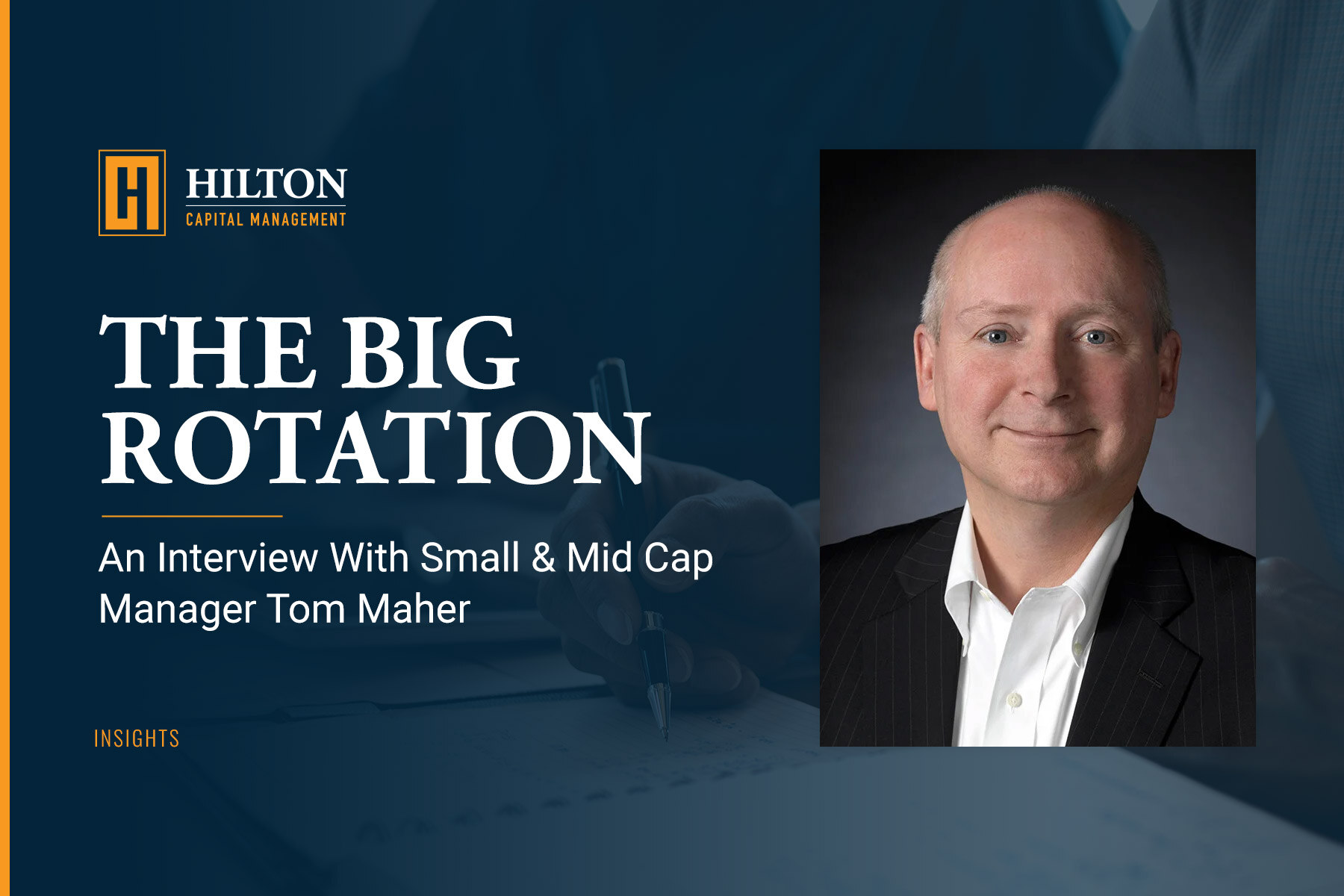HCM Insights
From the Ashes of Low Interest Rates: The 40/60 Portfolio Strikes Back

By Alex Oxenham, Co-Chief Investment Officer
In recent times, financial pundits have heralded the demise of the traditional 60/40 equity-to-fixed-income portfolio, arguing that the long bull market in bonds has come to an end. But as the pendulum of economic conditions swings, the rise in interest rates brings about a renaissance for the classic investment strategy.
Our strategy distinguishes itself by championing the alternative yet equally venerable 40/60 approach, with a stronger emphasis on fixed income.
Recent shifts in the economic landscape, particularly the upward trajectory of interest rates, have revitalized the potential of this conservative strategy. This resurgence may refute any proclamations of obsolescence that pundits have prematurely ascribed to the 40/60 allocation. Indeed, it suggests such a portfolio may not only be enduring but also particularly well-aligned with today's financial environment, signaling what could very well be a new golden age for the 40/60 investment philosophy.
The 40/60 Portfolio
The rationale behind a 40/60 split rests on the foundation of balance and diversification. A portfolio that allocates 40% to equities and 60% to fixed income aims to strike a middle ground between growth potential and capital preservation. In a low-interest-rate environment, reduced bond yields had indeed lessened the appeal of the 60% fixed-income component. However, as rates rise, so do the yields on new bond issues, which can translate to higher income for investors holding those bonds.
For income-focused investors, particularly retirees or those with a conservative risk profile, today's higher rates provide a breath of fresh air. The increased income can offer a cushion during periods of stock market volatility, providing cash flow that isn't dependent on the performance of the equity markets. Additionally, higher yields mean investors can achieve their income needs with a smaller allocation to riskier assets. This is particularly pertinent in times of market uncertainty when equities can exhibit greater volatility.
The Case for Fixed Income
The inflationary concerns that have been part and parcel of the rate hike narrative also bolster the case for bonds, particularly in this era of heightened inflationary pressures and ascending interest rates.
Our investment strategy emphasizes the inclusion of select fixed-income assets such as floating-rate AAA CLOs and senior loans. These securities can offer a compelling defense against inflation, as their interest payments adjust with market rates, thus providing a potential buffer against the eroding purchasing power of capital. The strong rating on our CLO exposure ensures we are selecting top-tier securities.
At the same time, senior loans offer a position high in the capital structure, typically resulting in a lower risk of loss. Together, these instruments form a strategic bulwark in our fixed-income portfolio, aiming to capture the benefits of rising rates while safeguarding our investors' assets. As inflation erodes the purchasing power of money, the regular interest payments from bonds can serve as a hedge, and certain types of fixed income may even benefit from rising prices.
Asset Allocation & Risk Management
Asset allocation, at its core, is about managing risk relative to an investor's time horizon and financial goals. The 40/60 portfolio is constructed with the understanding that while equity markets have the potential for higher growth, they also come with higher volatility and risk. Fixed income, on the other hand, typically provides lower returns but with greater stability. The key advantage of the 40/60 split is that it may reduce the portfolio's overall volatility while still allowing for growth through equities.
In market downturns, a higher allocation to fixed income can help stabilize a portfolio, preserving capital that can be redeployed into equities when prices are depressed. This counter-cyclical investing approach is facilitated by the liquidity that bonds provide, allowing for strategic rebalancing that can be challenging for managers who consistently position with a higher equity weighting. A higher allocation to such fixed-income assets is critical in these times, potentially offering the dual benefits of capital preservation and liquidity.
This liquidity is particularly valuable, enabling us to reposition into equities at opportune moments when their valuations become more attractive. It's this counter-cyclical investing technique that may transform market downturns into strategic advantage points, an approach that might be less accessible with a predominant equity focus. The foresight to rebalance tactically, harnessing the defensive nature of our fixed-income holdings, underscores our readiness to navigate and exploit the market's ebb and flow.
What About Interest-Rate Risk?
Critics of the 40/60 portfolio often highlight the potential for capital loss in bonds as interest rates rise. However, this risk can be partially managed by diversifying the fixed-income portion of the portfolio, particularly by incorporating floating-rate bonds.
These bonds, whose interest payments adjust with market rates, can serve as a hedge against rising interest rates. As rates increase, the yields on floating-rate bonds also rise, thus mitigating the risk of capital loss typically associated with fixed-rate bonds in a rising-rate environment.
Additionally, including short to intermediate-term bonds in the portfolio may further reduce interest rate risk. These bonds are less sensitive to interest rate changes than longer-term bonds and still benefit from higher yields. By strategically combining floating-rate bonds with short and intermediate-term bonds, investors can create a fixed-income portfolio that not only addresses the concern of capital loss due to rising rates but also capitalizes on the opportunity for higher income in such an environment.
The higher interest rate environment also diminishes the appeal of riskier asset classes that investors might have turned to in the quest for yield, such as dividend stocks or real estate investment trusts (REITs). With higher yields available in the safety of fixed-income securities, the risk-reward calculus shifts back in favor of bonds.
Conclusion
Lastly, it's important to remember that the 40/60 portfolio is not static. It represents a starting point, a foundation to build and adapt to an individual's changing life circumstances and market conditions. The ability to tweak the allocation in response to economic shifts is one of the portfolio's strengths, providing a dynamic tool for investors navigating the complex investment landscape.
We believe the rise in interest rates has reshaped the investment terrain to the advantage of the traditional 40/60 portfolio. With higher yields on fixed-income investments offering both greater income and stability, this time-tested approach may be a compelling choice for investors seeking a balanced, risk-managed approach to their long-term financial goals. As market conditions continue to evolve, the 40/60 portfolio stands ready to demonstrate its enduring value in the modern investor's arsenal.
To explore how the Hilton Tactical Income Strategy might redefine your investment approach in the current market landscape, we invite you to initiate a conversation with the Hilton Sales and Marketing team for personalized insights and strategies.









